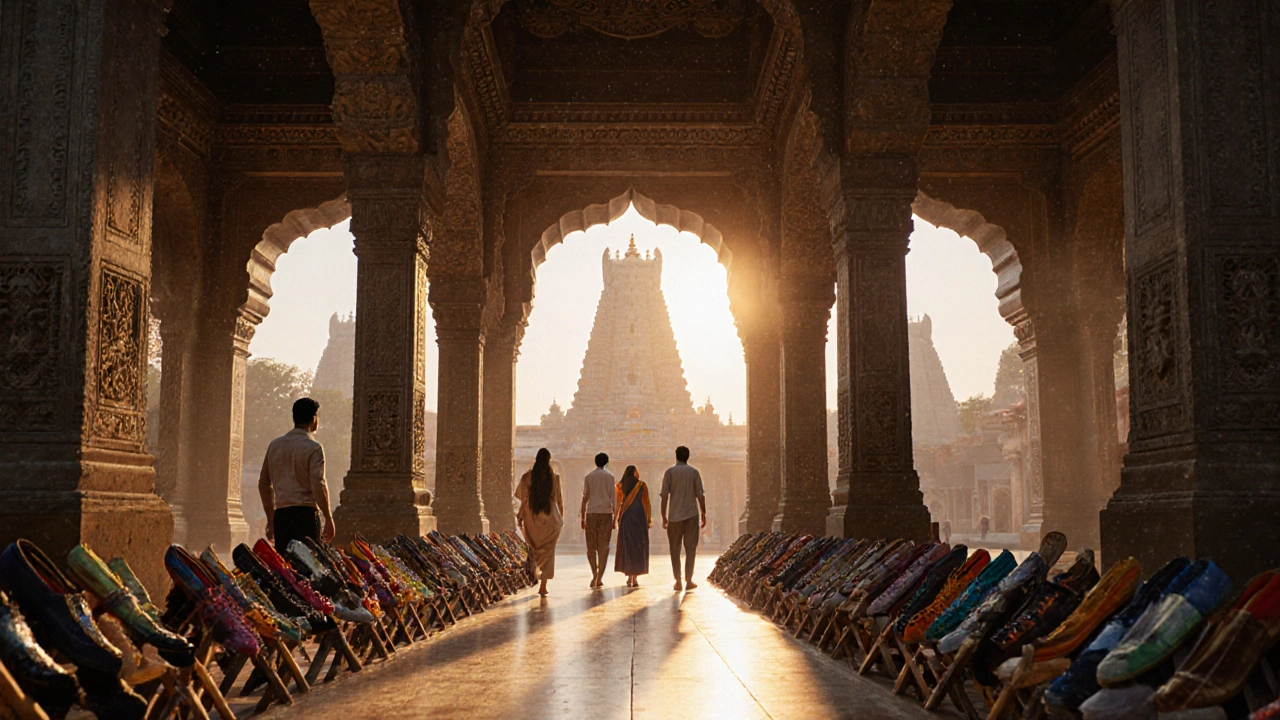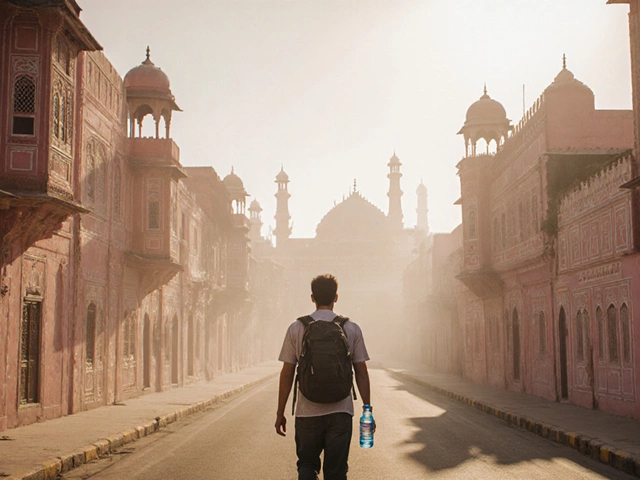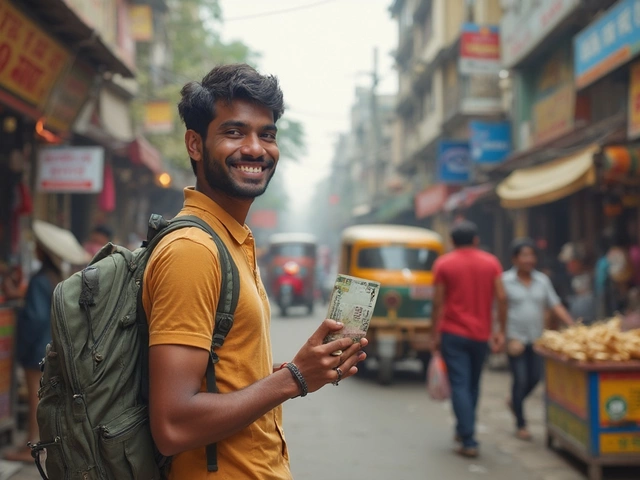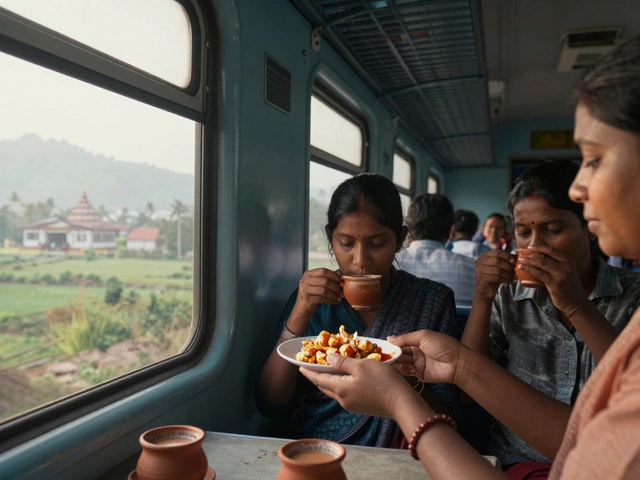Temple Entry Checklist
Complete Before Entering
Check all items below to ensure respectful temple entry:
Walking into a temple in India isn’t like walking into a museum or a tourist attraction. It’s a sacred space - and how you enter matters. If you’ve ever stood outside a temple in Varanasi, Tirupati, or Madurai wondering what to do next, you’re not alone. Many visitors, even those who’ve traveled across the world, get stuck at the gate because they don’t know the unwritten rules. The good news? It’s not complicated. You just need to know what to expect - and what to avoid.
Remove Your Shoes Before the Threshold
This is the first and most universal rule. Every temple in India, whether it’s a small village shrine or a massive stone complex like Meenakshi Temple, requires you to take off your shoes before stepping inside. You’ll see shoe racks or storage areas just outside the main entrance. Some temples have attendants who watch over them, others are self-service. Either way, leave your shoes behind.Why? It’s not about cleanliness - though that’s a side benefit. It’s about respect. In Hindu tradition, the ground inside the temple is considered holy. Your shoes carry dust from the outside world, and bringing that in is seen as disrespectful. Even if you’re wearing socks, you’ll usually be asked to remove them too. Some temples provide plastic bags to carry your shoes, but most people just leave them barefoot on the racks. Don’t worry - you’ll see locals and tourists doing the same thing.
Dress Modestly - No Shorts, No Revealing Clothes
What you wear matters more than you think. Men should avoid shorts, tank tops, or sleeveless shirts. Women should cover their shoulders and knees. Skirts and shorts are almost never allowed inside. Even in tourist-heavy temples like Rameswaram or Khajuraho, you’ll find signs in English and Hindi asking visitors to dress appropriately.Many temples offer free shawls or dhotis for those who show up in inappropriate clothing. In places like the Jagannath Temple in Puri, staff will hand you a cloth to wrap around your legs if you’re wearing pants that are too short. It’s not a punishment - it’s a kindness. You don’t need to buy traditional clothes, but you do need to cover up. A long skirt, a loose tunic, or even a sarong wrapped around your legs will work. If you’re unsure, wear long pants and a shirt that covers your shoulders. It’s safe everywhere.
Wash Your Hands and Feet - It’s Part of the Ritual
Before you step into the inner courtyard, you’ll often see a small pool or fountain near the entrance. This isn’t just for decoration. Many temples have designated areas where visitors wash their hands and feet. It’s a symbolic act - cleaning yourself before approaching the divine.You don’t need to scrub like you’re at a spa. A quick rinse under the water, then pat dry with a towel (if one’s provided), is enough. Some temples, especially in South India, have separate foot-washing stations with running water. In others, you’ll just splash water on your hands and face. It’s not mandatory in every temple, but if you see others doing it, follow along. It’s a quiet way to shift your mindset from tourist to devotee.
Don’t Carry Leather Items Inside
This one catches people off guard. Leather - belts, wallets, watches with leather straps, handbags, shoes - is strictly forbidden in most Hindu temples. Why? In Hinduism, cows are sacred, and leather comes from cows. Bringing anything made from cowhide into a temple is seen as a violation of purity.It’s not just about the material. It’s about the energy. Many priests and temple staff will ask you to remove leather belts or switch your bag if it has a leather strap. If you’re carrying a backpack with a leather clasp, it’s fine - just don’t wear it across your chest. Some travelers keep a spare cloth bag in their suitcase just for temple visits. Others leave their leather items with a temple attendant outside. It’s common. Don’t be embarrassed if you’re asked to remove something - it’s a routine part of the process.
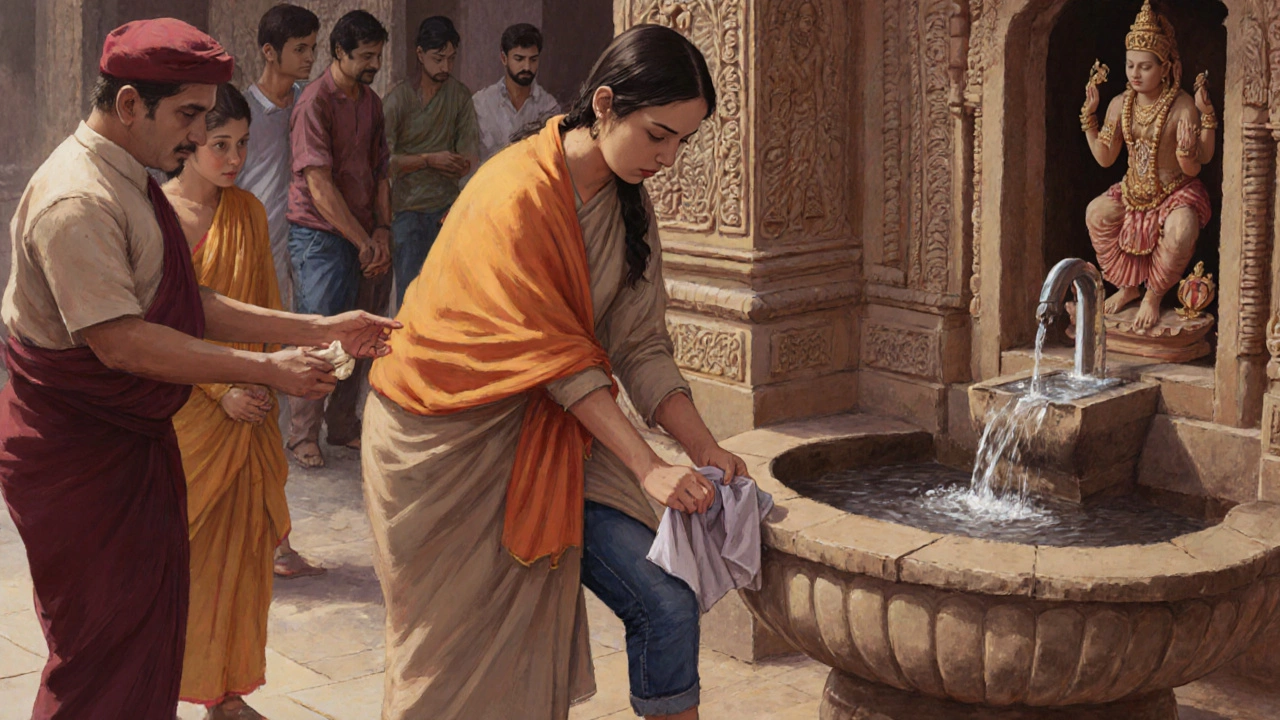
Follow the Direction of Movement - Don’t Walk Backwards
Inside the temple, you’ll notice people moving in a clockwise direction around the main shrine. This is called pradakshina. It’s not just tradition - it’s a spiritual practice. You’re meant to keep the deity on your right side as you walk. Don’t cut across the path or walk counterclockwise. It disrupts the flow and can be seen as disrespectful.Also, never turn your back to the main idol. Even if you’re taking a photo or stepping aside, avoid facing away from the sanctum. Many temples have marked pathways to guide you. If you’re unsure, watch what others are doing. Locals move slowly, quietly, with their heads bowed. You don’t have to pray out loud, but moving with awareness matters.
Don’t Point Your Feet at the Idol
This is one of the most subtle but important rules. In Indian culture, the feet are considered the lowest part of the body - physically and spiritually. Pointing your feet toward a deity, a priest, or even a sacred object is seen as rude. If you’re sitting on the floor near the temple, cross your legs or keep your feet tucked under you. Don’t stretch them out toward the shrine.Even standing, be mindful of your posture. If you’re kneeling or bowing, keep your feet flat on the ground or slightly behind you. In crowded temples, this is hard to control, but if you notice others adjusting their stance, do the same. It’s not about perfection - it’s about intention.
Ask Before Taking Photos
Photography rules vary wildly from temple to temple. In some, like the Golden Temple in Amritsar, cameras are banned entirely. In others, like the Brihadeeswarar Temple in Thanjavur, you can take photos outside but not inside the inner sanctum. Some temples allow photos of the exterior but not of the main idol. Others charge a fee for photography.Never assume it’s okay. Look for signs - they’re usually in English and Hindi. If you don’t see any, ask a temple volunteer or a staff member. A simple “Can I take a photo?” works. Don’t use flash. Don’t climb on statues or railings. And never photograph rituals unless you’re explicitly told it’s allowed. The sanctum is a private space - even if it looks like a photo op, it’s not.
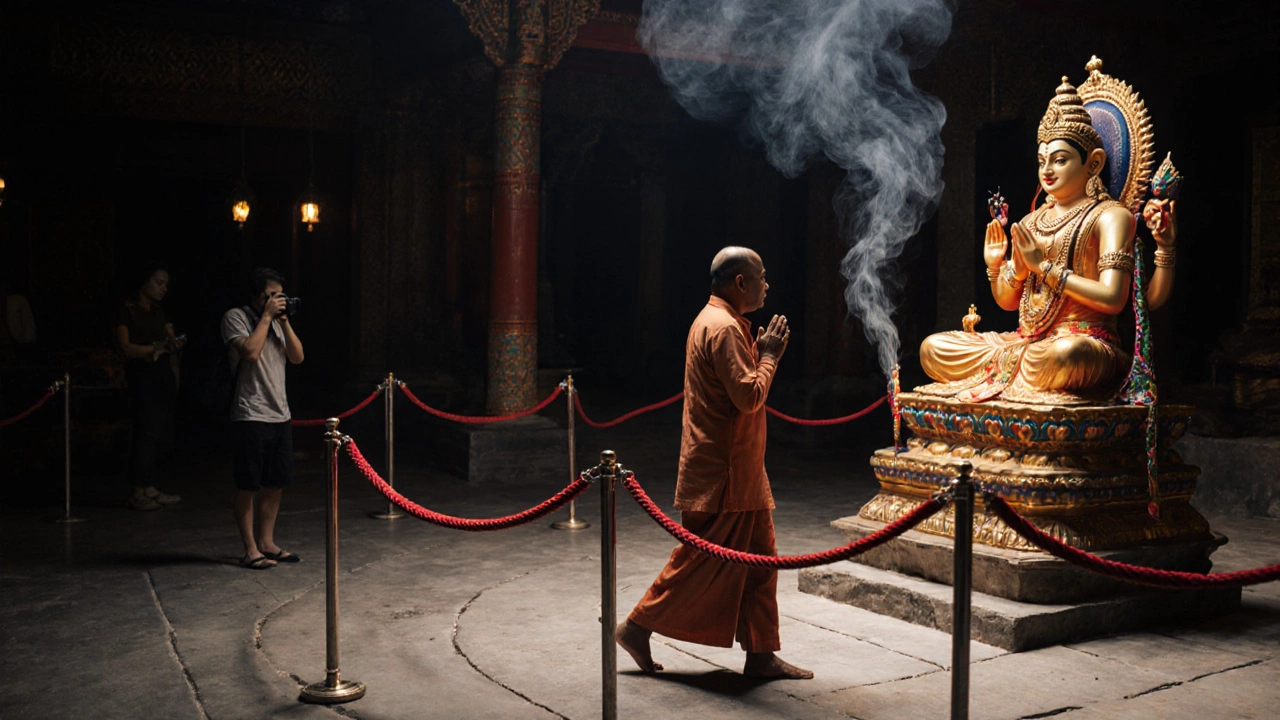
Don’t Touch the Idol or Offerings
It’s tempting. The idols are beautiful. The flowers, the incense, the offerings of fruit and sweets look so inviting. But you don’t touch them. Not even with your fingertips. The idol is not a statue - it’s considered a living form of the divine. Priests handle everything with ritual purity. Visitors are there to observe, not interact.If you want to make an offering, you can buy flowers or coconuts from vendors outside and hand them to a priest. They’ll place them on the altar for you. You can also donate money in the donation box. But never reach into the sanctum. Even if you see others doing it - don’t follow. Most of the time, they’re locals who’ve grown up with these customs and know the exceptions. You don’t.
Be Quiet. Listen More Than You Speak.
Temples are not tourist spots. They’re places of worship. Even during peak hours, the atmosphere is calm. You’ll hear bells, chants, the murmur of prayers, the rustle of cloth. That’s the sound of devotion. Talking loudly, laughing, or using your phone is jarring.Put your phone on silent. Don’t record videos unless you’re asked to. Don’t ask your travel companion to pose for a selfie in front of the main shrine. If you need to speak, whisper. If you’re with kids, keep them close and quiet. The temple doesn’t owe you a perfect photo. It owes you respect.
What If You Make a Mistake?
You might forget to take off your shoes. You might accidentally point your foot toward the idol. You might snap a photo where you shouldn’t. It happens. Everyone makes mistakes.The good news? Most temple staff understand that visitors are learning. If you notice you’ve broken a rule, pause. Apologize quietly with a slight bow. Don’t argue. Don’t get defensive. Just say “Sorry” and correct yourself. Most people will nod and move on. No one will yell. No one will kick you out. But if you act like you don’t care, that’s when things get uncomfortable.
Temples in India are built on centuries of tradition - but they’re also built on kindness. People here are used to travelers. They’ve seen every mistake you can make. What they want is for you to try. To show up with an open heart, not just an open camera.
Can I wear jeans to a temple in India?
Yes, you can wear jeans - as long as they’re not ripped or too tight, and you cover your shoulders with a shirt or shawl. Many travelers wear jeans in North India, especially in temples like Vaishno Devi or Amarnath. But in South India, especially in Tamil Nadu or Kerala, long pants are preferred. When in doubt, pair jeans with a long tunic or kurti that covers your hips and thighs.
Do I need to be Hindu to enter a temple?
No. Most major temples in India welcome people of all faiths. The only requirement is respect. You don’t need to pray, chant, or follow any rituals. You just need to follow the basic rules: remove your shoes, dress modestly, stay quiet, and don’t touch the idols. Some small village temples may restrict entry to Hindus only - but these are rare and usually clearly marked.
Are there temples where women can’t enter?
There are a few temples in India with restrictions on women during certain days - most famously the Sabarimala Temple in Kerala, which historically barred women of reproductive age. But these rules are changing. In 2025, most major temples, including those in Tirupati, Puri, and Varanasi, allow women to enter at all times. Always check the temple’s official policy before visiting, but assume entry is open unless stated otherwise.
Can I bring water or snacks into the temple?
No. Food, drinks, and chewing gum are not allowed inside temple grounds. Most temples have designated eating areas outside the main complex. If you’re thirsty, carry water in a bottle and drink it before entering. If you’re hungry, eat before you arrive. The temple space is for worship, not refreshment.
What should I do if I’m menstruating?
Some traditional temples, especially in rural areas, may ask women not to enter during menstruation. This is based on old beliefs about purity. But in most major temples - including those visited by millions of tourists - this rule is no longer enforced. If you’re unsure, you can ask a temple staff member discreetly. If they say it’s allowed, go ahead. If they say it’s not, respect their guidance. There’s no shame in choosing not to enter - and no judgment from others.
